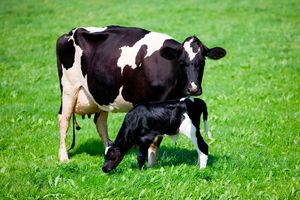
City residents run to shield themselves from heavy rains that pounded in the Capital on Sunday, January 26, 2025.
You’ve probably asked yourself this question in many forms—why is it raining in January?
Usually, this is a month for sunshine, dust, and harvest time for some farmers. But now, Nairobians and other Kenyans across the country are caught between carrying an umbrella or risking it.
Why is this happening? Dr David Gikungu, director-general at the Kenya Meteorological Department responds:
See, rain is not everywhere. It’s found in what you might call pockets of the country. And won’t last long. We expect it to be gone by the end of the week.
Notably, we are in a dry season. Other parts of the continent, like Tanzania, are experiencing their seasonal rainfall.
Some of that can spill over into Kenya, just as it can be pushed south. This happens due to a convergence of winds from the northern and southern hemispheres.
As these winds travel across our moisture-rich oceans, they rise, and if conditions are right, they bring rainfall.
These conditions include low pressure that makes it possible for the moisture to rise, condense and fall back as rain. The low pressure is caused by the presence of the overhead sun.
What caused the recent hailstorms in some parts of the country?
Highland areas, including parts of the Rift Valley, experience cold temperatures that allow clouds to form thick blocks of ice.
When those ice pellets fall, they can land as hail or rain, depending on the temperature they interact with on the way down. So, no surprises here. It’s all part of the bigger climate puzzle.
Kenya Met released the March-May weather forecast on Wednesday. What can we expect?
We are predicting varied rainfall patterns across the country. Near to above-average rainfall is expected over the Lake Victoria Basin, the South Rift Valley, and parts of the Highlands West of the Rift Valley.
However, Central Rift Valley, Nairobi, much of the coastal region, and northeastern Kenya are likely to experience near to below-average rainfall, with some areas receiving below-normal amounts.
The season is anticipated to have an uneven distribution of rainfall, both in time and space.
The onset is expected to be normal to late, with occasional dry spells and localised storms in some regions.
The peak rainfall is projected to occur in April for most parts of the country, except for the coastal strip, where the heaviest rains are likely in May.
Regional Rainfall Outlook for March-May
Communities in the Lake Basin, southeast lowlands, and extreme northwest are expected to experience near to above-average rains, leading to flooding and an upsurge in waterborne diseases such as cholera, typhoid, and bilharzia.
Additionally, vector-borne diseases like malaria, chikungunya, and Rift Valley fever (RVF) are expected to rise due to increased mosquito breeding sites.
The March-April-May (MAM) forecast report also warns of stress on the health system, with submerged health facilities and impassable roads limiting access to medical care.
This is expected to disproportionately affect pregnant women, children under five, and patients requiring routine medication. Mental health challenges due to displacement and economic loss are also anticipated.
Despite the risks, the forecast notes some positive health impacts, including increased water availability, which could help reduce WASH-related diseases like diarrhoea and scabies.
The prevalence of malnutrition is also expected to decline in areas where food production improves due to the rains.
The Lake Basin, southeast lowlands, and extreme northwest are set to experience above-average rainfall, increasing the likelihood of flooded roads, bridge collapses, and impassable transport networks.
Experts warn that urban centres, particularly Nairobi, Kisumu, Mombasa, and Eldoret, could face severe flooding, disrupting commuter movement and cargo transportation.
Additionally, rural areas are at risk of washed-out roads, stranding communities and cutting off access to essential services such as healthcare and markets.
In contrast, regions expecting below-normal rainfall, including parts of northern Kenya, central Rift Valley, and the highlands east of the Rift Valley, will likely grapple with dust storms, heat-induced road damage, and increased vehicle wear and tear.
On food production, the MAM 2025 seasonal forecast signals a mixed economic outlook with potential food production gains in some regions and economic stress in others due to rainfall variability.
The forecast suggests that western Kenya may experience increased food production due to near to above-average rainfall.
However, central and eastern regions—which are expected to receive below-normal rainfall—could see declining crop yields.
With below-normal rainfall in some regions, the production of hydroelectric power, a key energy source in Kenya, is expected to decline, forcing the country to rely more on thermal electricity, which is significantly more expensive.
This shift could raise production costs across industries, further straining businesses and consumers who are already grappling with high living costs.
In addition, KMD predicts warmer-than-average temperatures across the country, with the highest probabilities in the northeastern, coastal, southeastern, and eastern highland regions.
Authorities and stakeholders have been urged to stay updated with subsequent advisories and prepare accordingly. Kenyans are encouraged to follow daily and weekly forecasts to stay informed.
lnjeru@ke.nationmedia.com







